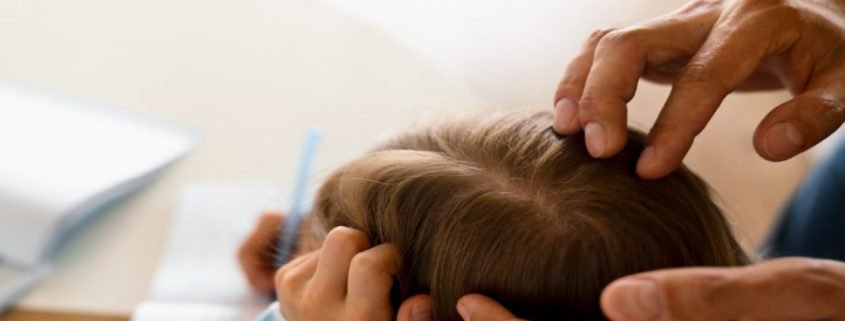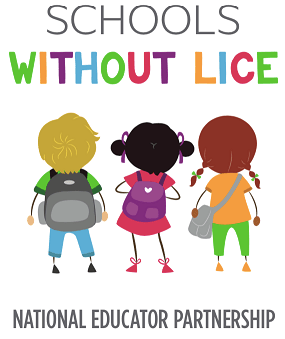Head Lice: What Parents Need to Know
If you are a caregiver of a small child, then you may or may or may not have dealt with the trials that ensue when they test positive for head lice. If you have, you may recall what that moment felt like. Stressed, worried, and with an onslaught of questions running through your brain, you may have wanted to try a million different things. We get it. The staff at Fresh Heads Lice Removal in Jacksonville and Orlando, Florida, and Savannah, Georgia, aren’t rookies when it comes to head lice in adults and children.
It might sound cliche, but the key to treating this condition is through timeliness and effectiveness. Unfortunately, there is much misinformation about head lice themselves and about treatments. Specifically, the numerous DIY’s that claim to be an effective alternative to receiving professional treatment. Understand that no matter how quick or easy an at-home-treatment might sound, the best option will always be to seek out assistance from a licensed professional. One of the worst things you can do is waste your time with ineffective treatments and the condition gradually worsens.
We know that there is an overwhelming amount of information on the web about head lice, so we wanted to provide a trusted source to aid in your search for finding the best treatment option for you and your loved one. We’ll review the appearance and functionality of head lice, how they spread, the treatment options we have available, and how you can prevent your child from getting head lice.
Head Lice: Appearance And Functionality
Firstly, adult head lice are about the size of a sesame seed and are grey or white in color. However, they can also be a darker color for individuals who have darker hair. They have six legs in total and attached to the end of each are hook-like claws that allow them to grip onto the hair strand firmly. When they move around on the scalp, there’s this head-tickling sensation that causes people to itch, or make them believe they can “feel” the bugs moving. Head lice feed off of blood from the scalps of people and an adult head louse can live for about 45 days with a constant food supply. A female head louse can lay about 6-10 eggs a day, strategically, about ¼ of an inch above the scalp.
Secondly, head lice nits, or eggs, can be yellow, white, or black in color. They are about the size of a single knot in a piece of thread. As you can imagine, they are often confused with dandruff, sores, or water droplets on the scalp. Seeing them with the naked eye is almost impossible. Using traditional hair tools to remove them will be virtually ineffective because they are so small and so close to the scalp. After about 9 days, they will hatch into a nymph.
Nymphs are just even smaller versions of adult head lice. They feed on the blood of the scalp until they fully mature, about 9-12 days later.
The Transferability of Head Lice
Before we continue, let’s bust some myths first:
- Swimming Does Not Spread Head Lice: The idea that you can drown head lice is simply false. Not only are the chlorine levels used in most community swimming pools not strong enough to kill head lice, but submerging them underwater alone will not get rid of them. Remember those hooks we mentioned earlier? Well what makes them impossible to remove by traditional methods, like washing the hair (where they will be underwater), is because of those claws. They are able to hang onto the hair and not let go. In other words, once on the hair, they are staying until removed with the proper tools or treatments. The same applies to head lice nits.
- No, They Don’t Spread Diseases: We know that the word parasite when used to talk about the pesky bugs can be somewhat alarming. Regardless, the scratching from the constant itching is what leads to possible sores on the scalp. That is what leads to infection if an individual develops one.
- Head Pieces And Wigs Do Not Spread Head Lice: Head lice need a constant blood supply in order to remain alive. The nature of wigs requires a protective piece, called a wig cap, in order to keep the natural hair safe. It provides a barrier to whatever tools and manipulation tactics one might use for the wig itself. Head lice cannot go longer than a day without feeding, so transmission from a wig or headpiece is extremely low.
Our Signature Treatment: The Airalle
A non-toxic treatment starting at $159.99, the purpose of our patented AirAlle device is to ensure that each of our clients who elect to receive this treatment, only have to visit us once.
Easy.
The Airalle uses warm, dry air to kill all of the adult head lice, nymphs, and nits. It’s a 90-minute process that includes a comb-out and a nontoxic treatment that is applied to the scalp. This treatment is recommended for anyone over the age of three.
Fresh Heads Lice Removal: Your One And Done Stop
You don’t have to be alone and frazzled when trying to get rid of a head lice infestation. Whether it is head lice in adults or children, our staff are prepared to give you the most effective treatment once so you nor those that live in your house will ever have to worry about the parasites again. As stated earlier, the key is effectiveness and timeliness. The longer you wait to seek help from a trained professional, the higher the risk of severe infestation and transmissibility to others. We understand that parents strive to ensure their little ones are healthy and itch-free. That is why we pride ourselves on providing effective treatments and reliable information so that all who enter our offices will have an all-encompassing experience.
We have numerous treatment options available for every budget here on our website. Take a look and schedule your appointment today!
Schools Without Lice
At Fresh Heads Lice Removal, our mission is to get rid of lice in schools across the United States. We’ve partnered with the Lice Clinics of America to create the Schools Without Lice program. Through this program, we provide school nurses and teachers with free screenings, resources, and treatments. Together, we can have schools without lice!















